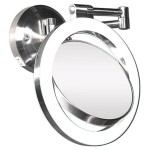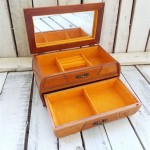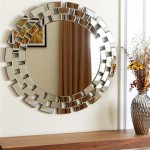How To Make A Mirror Frame From Pallet Wood
Creating a rustic and unique mirror frame from reclaimed pallet wood offers a sustainable and cost-effective way to enhance any living space. This project requires basic woodworking skills and readily available tools. The following guide provides a step-by-step process to construct a beautiful pallet wood mirror frame.
Gathering Materials and Tools: Before beginning the project, one must assemble the necessary materials and tools. These include pallet wood, a mirror, measuring tape, a saw (hand saw or circular saw), safety glasses, gloves, sandpaper (various grits), wood glue, nails or screws, a hammer or drill, a level, wood stain (optional), and a sealant.
Preparing the Pallet Wood: Dismantling the pallet is the first step. Prying apart the boards carefully, rather than breaking them, preserves usable wood. Once disassembled, the nails should be removed using a hammer and pry bar or a nail puller. Cleaning the wood with a brush and damp cloth removes dirt and debris. Inspect the wood for any metal fragments remaining and remove them.
Measuring and Cutting the Wood: Accurate measurements ensure a well-fitting frame. Carefully measure the length and width of the mirror. Add twice the desired frame width to each measurement to determine the length of the frame pieces. For example, for a mirror measuring 12 inches by 18 inches and a desired frame width of 3 inches, the frame pieces would be 18 inches and 24 inches respectively. Using a saw and the calculated measurements, cut four pieces of pallet wood: two for the length and two for the width. Ensure cuts are straight and accurate.
Creating the Frame: The cut pieces form the frame's structure. Arrange the pieces to form a rectangle, ensuring the corners align precisely. Apply wood glue to the joining edges. Secure the pieces together using nails or screws. If using nails, pre-drilling pilot holes prevents the wood from splitting. Clamping the frame during assembly helps maintain a tight bond while the glue dries. Allow adequate drying time according to the glue manufacturer's instructions.
Sanding and Finishing: Sanding the frame creates a smooth surface and enhances the wood's natural beauty. Begin with a coarser grit sandpaper (e.g., 80 grit) to remove any rough edges or splinters. Gradually progress to finer grits (e.g., 120, then 220 grit) for a smooth finish. Wipe away sawdust with a clean cloth. This process prepares the frame for staining and sealing.
Staining and Sealing (Optional): Staining enhances the wood's color and grain pattern while providing a layer of protection. Apply wood stain according to the manufacturer's instructions. Allow the stain to dry completely before applying a sealant. A sealant protects the frame from moisture and wear, prolonging its lifespan. Apply the sealant evenly and let it dry according to the manufacturer's guidelines.
Attaching the Mirror: Before attaching the mirror, measure and mark the center point on the back of the frame. This ensures the mirror is positioned correctly within the frame. Apply mirror adhesive or use mirror clips to secure the mirror to the frame backing. Follow the adhesive or clip manufacturer’s instructions for proper application and drying time. Ensure adequate support for the mirror while the adhesive sets.
Adding Hanging Hardware: To hang the finished mirror frame, suitable hanging hardware should be attached to the back. D-rings or wire hangers are common choices. Position the hardware evenly to ensure the frame hangs straight. Consider the weight of the mirror and frame when selecting appropriate hardware. Follow the hardware manufacturer's instructions for proper installation.
Displaying the Finished Product: Once the hanging hardware is secured, the completed pallet wood mirror frame is ready to be displayed. Choose a suitable location that complements the frame’s rustic aesthetic. Hang the frame securely using appropriate picture hanging hardware.
Creating a mirror frame from pallet wood offers a rewarding and environmentally conscious way to add a touch of rustic charm to any décor. Adapting the frame's size and finish allows customization to suit individual preferences and existing interior design. The process of transforming reclaimed wood into a functional and decorative piece provides a sense of accomplishment and contributes to sustainable practices.

Diy Rustic Farmhouse Pallet Wood Round Mirror

Rachel Schultz Framing A Bathroom Mirror With Pallets

Diy Pallet Framed Mirror

Rustic Mirror Made From Reclaimed Pallet Wood Bathroom Mirrors Pallets

How To Build A Mirror Frame With Pallets Diy Tutorial 10 Steps Homify

Rustic Mirror Frame Out Of Pallets

Pallet Art Rustic Mirror Frame Jon S Diy

Diy Pallet Wall Mirror Ideas

Pallet Wood Mirror Makeover Knockoffdecor Com

How To Make A Rustic Pallet Mirror Frame With Shelf Hometalk








